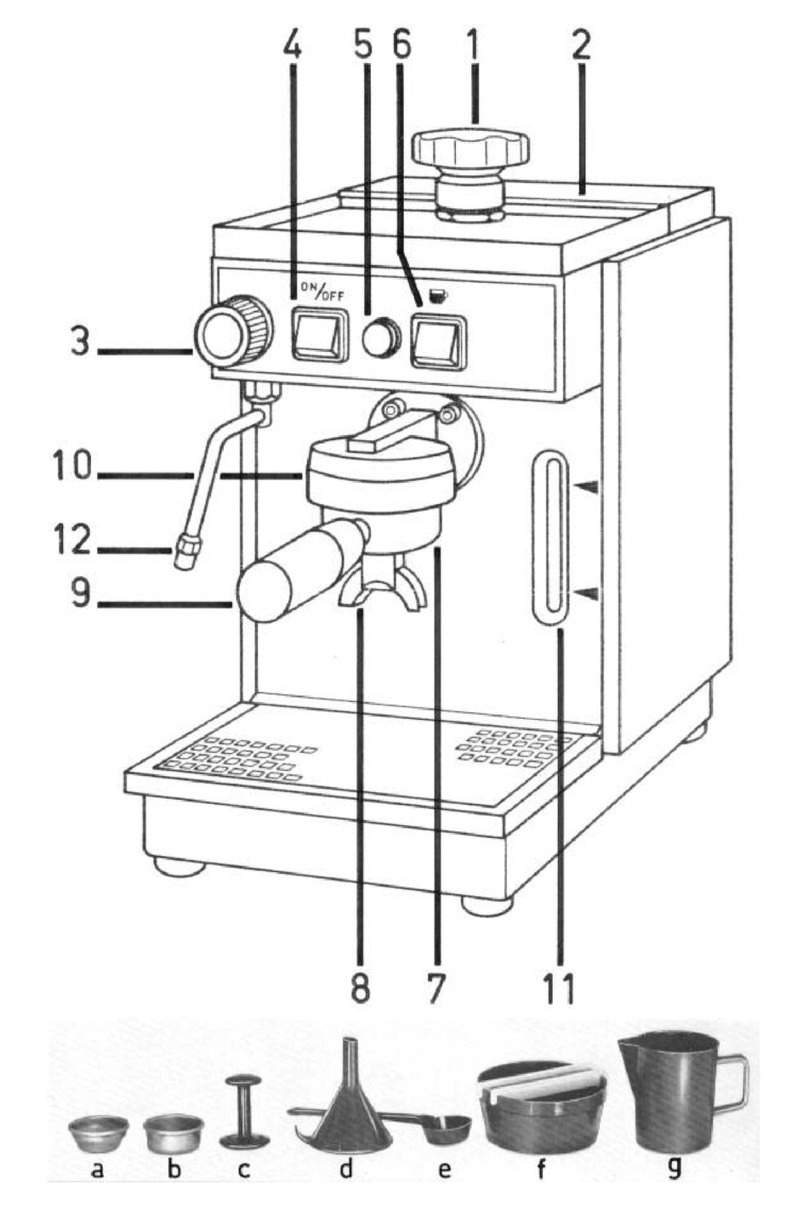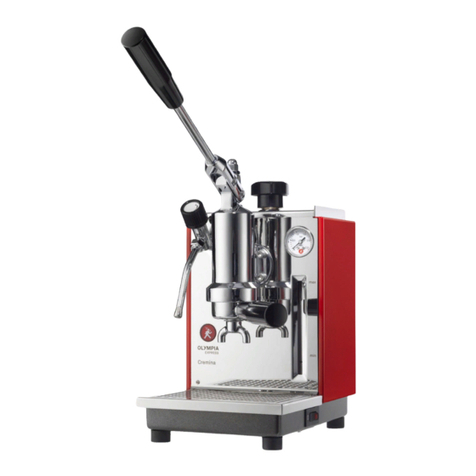
0908
Safety instructions.
The Maximatic espresso machine is designed to be
used in the home or in office kitchens. Please read ca-
refully the guarantee terms on the enclosed postcard.
For your own safety and in order not to invalidate your
warranty rights, please pay attention to the following
safety instructions:
•Read the instructions very carefully before you first
start the machine. Keep them close to the machine
in case any questions should arise.
•Please do never open the boiler top 1when the
machine is switched on and if the steam wand 12
has not been emptied completely. Only open the
boiler top when the machine is switched off 4. Also
open the steam tab 3in order to release built up
pressure.
•The apparatus can only be connected to AC power
supply. The allowed voltage can be found on a plate
on the bottom side of the machine.
•When the machine is switched on, your Maximatic
can get very hot. Please only touch the machine at
its handles and make other users aware of the thre-
at of burns and scalds, which can occur for example
through the leaking of hot water or the discharge of
hot steam.
•Do not allow children to play with the appliance.
•When faults occur while the machine is on, and be-
fore all cleaning and maintenance work, remove the
plug from the power outlet.
•Only specialists and authorized personnel are allo-
wed to repair electrical goods.
•Never yank the cable in order to pull out the plug,
nor touch it with wet hands.
•This piece of machinery may be used by children
8 years of age and over who have been supervised
or instructed in the safe use of the equipment and
have understood the resulting hazards. Cleaning
and maintenance by the user must not be carried
out by children unless they are 8 years of age or
older and are supervised. The appliance and its
connecting cable must be kept away from children
under 8 years of age.
•Equipment may be used by persons with limited
physical, sensory or mental abilities or lack of expe-
rience and knowledge if they have been supervised
or instructed in the safe use of the equipment and
have understood the hazards involved.
•Never pull the cable over sharp corners and make
sure that it is not squashed or bent.
•Do not carry or pull the machine by its cable.






























